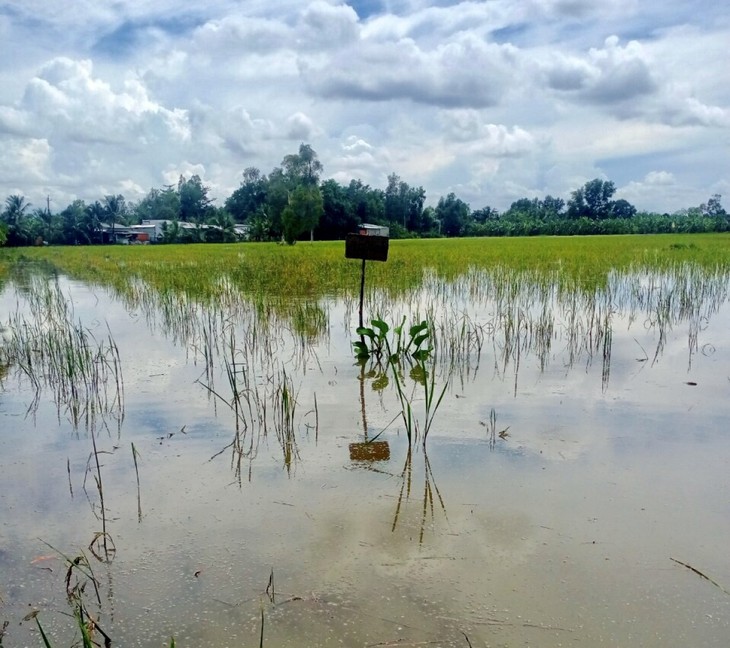(VOVWORLD) - Farmers in Phung Hiep district in Hau Giang province have started breeding fish in their rice fields during the annual flood season. The model has created strong profits and helped to improve the soil for the next winter-spring rice crop. The floodwaters have arrived now and the locals are releasing fish into the rice fields.
 A farmer is releasing young fish into the rice fields. (Photo: VOV) A farmer is releasing young fish into the rice fields. (Photo: VOV)
|
More than a month ago, Tran Van Binh of My Chanh hamlet in Hau Giang province bought 20 kilos of young fish to raise. After harvesting his summer-autumn rice crop, he began to release the fry into his rice field.
Binh says many local farmers have in recent years switched from planting an autumn-winter rice crop to breeding fish in the flood season.
At the end of the 10th lunar month when the water goes down, Binh will harvest his fish and prepare to sow his winter-spring rice crop. From one hectare of fish, Binh will earn about 440 USD in just a few months.
Binh told VOV, “My third rice crop often has a low yield, so I decided to raise fish in my field to make a little more money. If I raise 20 kilos of fish, I can earn some 440 USD. If I raise 25 kilos, I can earn between 570 and 620 USD. A fish weighs between 800 and 1,300 grams, depending on the type.”
As Phung Hiep is the lowest-lying land in the Mekong Delta, local farmers used to get poor returns from growing a third rice crop during the flood season.
But since they started breeding fish in their rice fields, they have made higher profits with a smaller investment and less risk. They only have to buy young fish and nets to contain them. They don’t need to buy fish food because the fish can feed on the field’s plants, wild fish, and other aquatic species.
 Fish is raised in the rice field. (Photo: VOV) Fish is raised in the rice field. (Photo: VOV) |
Nguyen Van Minh of Phuong Hoa hamlet says the farmers begin to harvest after three months.
“This year I released 10 kilos of fry into a 2-hectare field. Now they are bigger than my biceps. When the floodwater arrives, there will be abundant food for the fish. At the end of the 10th lunar month traders will come to buy my fish, and on the 10th day of the 11th lunar month I’ll begin my winter-spring crop,” said Minh.
Five years ago, Phung Hiep district had about 300 hectares dedicated to fish farming during the flood season. Now that has increased 10 fold.
Tran Van Tuan, Head of the Agriculture and Rural Development Section of Phung Hiep district, says raising fish in the rice fields during the wet season increases soil fertility and reduces the cost of the next rice crop, because the fish eat algae, perform field sanitation, and limit the wild weeds. Raising fish in their rice fields can save farmers 44 USD per hectare in land tilling costs.
According to Tuan, “This year, the area for rice-field-based fish farming in Phung Hiep district is expected to increase to 4,000 hectares. Local farmers have already bought fingerlings, nursed them in ponds and ditches, and have begun releasing them into the fields. Fish manure will reduce significantly the amount of fertilizer needed for the winter-spring crop.”
The trend for farmers in the Mekong Delta is to choose a production model matched to the natural conditions of their region, thereby reducing production costs and increasing their profits.